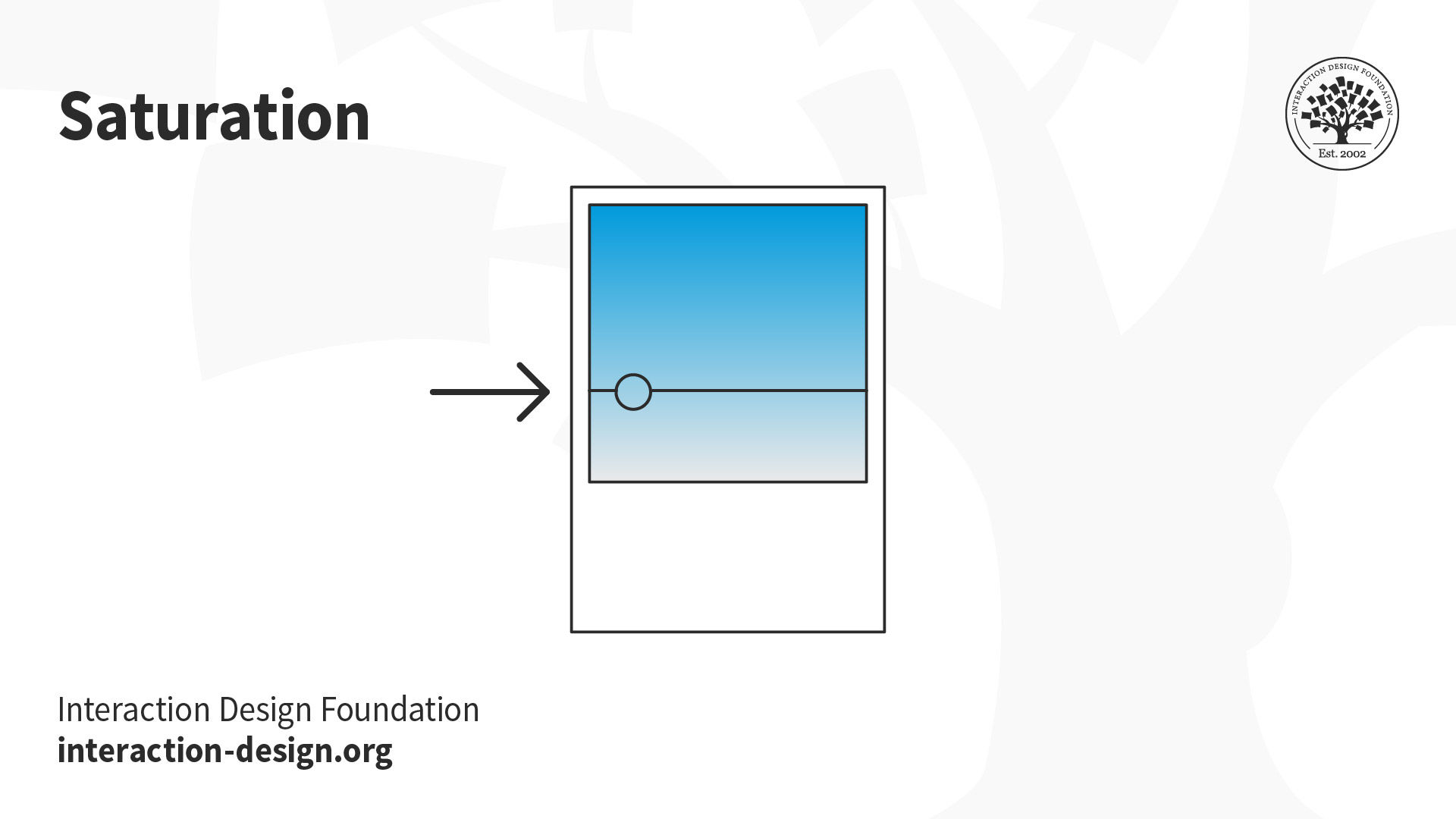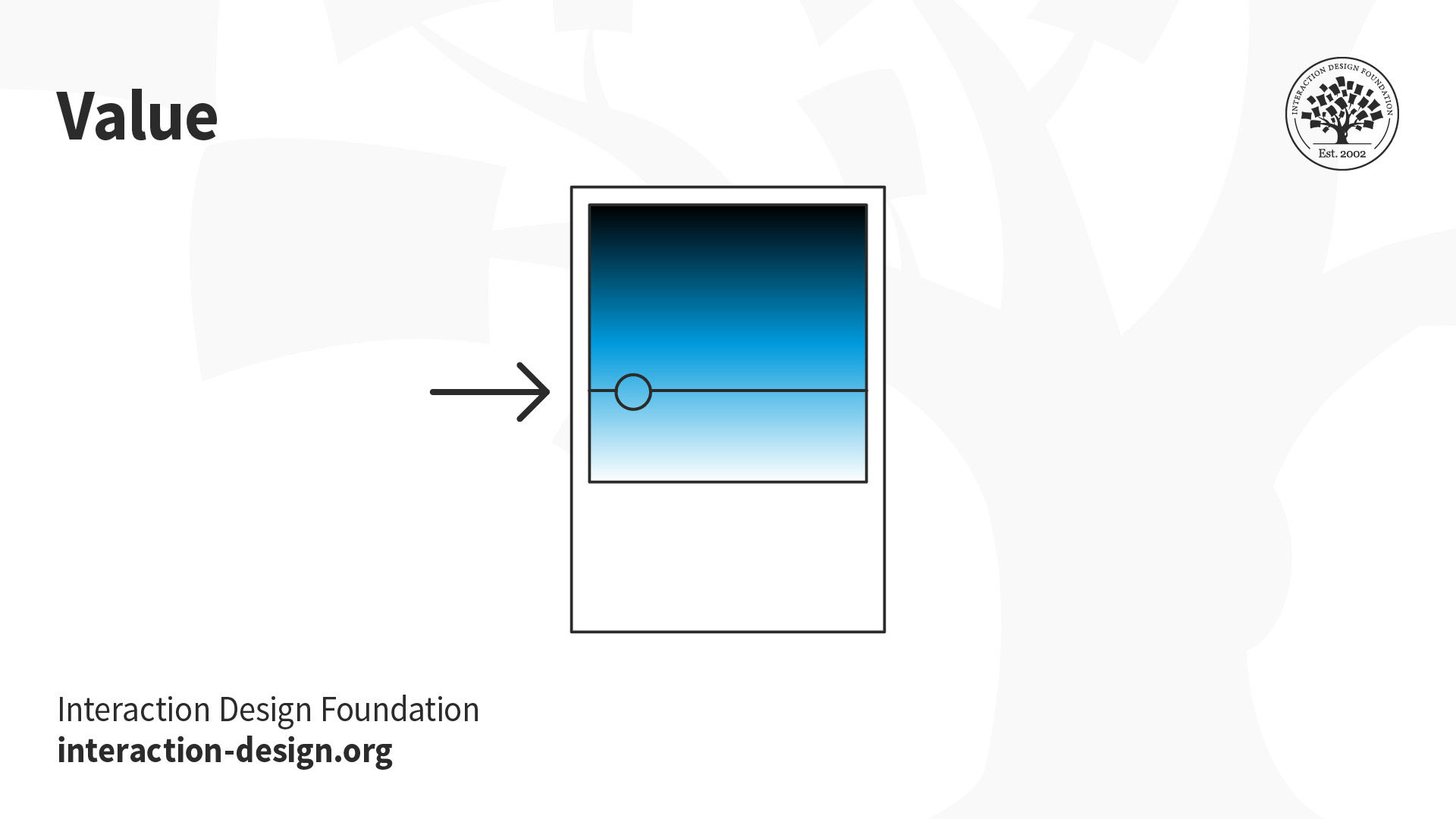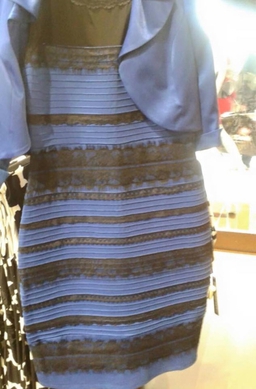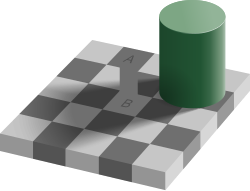Hue, saturation, and brightness are the three primary ways to describe colors.
Hue is the “color” of colors. It’s what distinguishes blue from red. It’s probably the first thing that comes to mind when you’re asked to imagine two different colors.
Saturation measures the intensity/purity of a color. The more saturated a color is, the more vivid it appears to be.
A less saturated color will appear to be more muted and grey.
For example, crimson would be a more saturated red, while brick would be a more desaturated red.
Brightness refers to the lightness or darkness of a color. Think of the typical greyscale, where colors range from a lighter white to grey to a darker black.
When we add white to a color, we end up with a tint of that color. When black is added, we get a shade.
Brightness may sometimes be referred to as "value."









